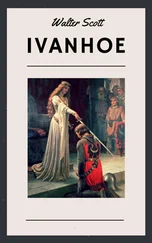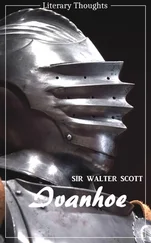Stanza XV. line 287. ‘In Scotland there are about twenty palaces, castles, and remains, or sites of such,
“Where Scotia’s kings of other years”
had their royal home.
‘Linlithgow, distinguished by the combined strength and beauty of its situation, must have been early selected as a royal residence. David, who bought the title of saint by his liberality to the Church, refers several of his charters to his town of Linlithgow; and in that of Holyrood expressly bestows on the new monastery all the skins of the rams, ewes, and lambs, belonging to his castle of Linlitcu, which shall die during the year....The convenience afforded for the sport of falconry, which was so great a favourite during the feudal ages, was probably one cause of the attachment of the ancient Scottish monarchs to Linlithgow and its fine lake. The sport of hunting was also followed with success in the neighbourhood, from which circumstance it probably arises that the ancient arms of the city represent a black greyhound bitch tied to a tree....The situation of Linlithgow Palace is eminently beautiful. It stands on a promontory of some elevation, which advances almost into the midst of the lake. The form is that of a square court, composed of buildings of four storeys high, with towers at the angles. The fronts with the square, and the windows, are highly ornamented, and the size of the rooms, as well as the width and character of the staircases, are upon a magnificent scale. One banquet-room is ninety-four feet long, thirty feet wide, and thirty-three feet high, with a gallery for music. The King’s wardrobe, or dressing-room, looking to the west, projects over the walls, so as to have a delicious prospect on three aides, and is one of the most enviable boudoirs we have ever seen.’-SIR WALTER SCOTT’S Provincial Antiquities.-Prose Works , vol. vii. p. 382.
line 288. With ‘jovial June’ cp. Gavin Douglas’s ‘joyous moneth tyme of June,’ in prologue to the 13th AEneid, ‘ekit to Virgill be Maphaeus Vegius,’ and the description of the month in Lyndsay’s ‘Dreme,’ as:-
‘Weill bordourit with dasyis of delyte.’
line 291. ‘I am glad of an opportunity to describe the cry of the deer by another word than braying , although the latter has been sanctified by the use of the Scottish metrical translation of the Psalms. Bell seems to be an abbreviation of bellow. This silvan sound conveyed great delight to our ancestors, chiefly, I suppose, from association. A gentle knight in the reign of Henry VIII, Sir Thomas Wortley, built Wantley Lodge, in Wancliffe Forest, for the pleasure (as an ancient inscription testifies) of “listening to the hart’s bell ”‘-SCOTT.
line 298. Sauchie-burn, where James III fell, was fought 18 June, 1488., ‘James IV,’ says Scott, ‘after the battle passed to Stirling, and hearing the monks of the chapel-royal deploring the death of his father, he was seized with deep remorse, which manifested itself
in severe penances.’ See below, note on V. ix.
line 300. ‘When the King saw his own banner displayed against him, and his son in the faction of his enemies, he lost the little courage he ever possessed, fled out of the field, fell from his horse as it started at a woman and water-pitcher, and was slain, it was not well understood by whom.’-SCOTT.
Stanza XVI. line 312. In the church of St. Michael, adjoining the palace.
line 316. The earliest known mention of the thistle as the national badge is in the inventory of the effects of James III, Thistles were inscribed on the coins of the next four reigns, and they were accompanied in the reign of James VI for the first time by the motto Nemo me impune lacessit . James II of Great Britain formally inaugurated the Order of the Thistle on 29 May, 1687, but it was not till the reign of Anne, 31 Dec. 1703, that it became a fully defined legal institution. The Order is also known as the Order of St. Andrew.-See CHAMBERS’S Encyclopedia .
line 318. It was natural and fit that Lyndsay should be present. It is more than likely that he had a leading hand in the enterprise. As tutor to the young Prince, it had been a recognised part of his duty to amuse him by various disguises; and he was likewise the first Scottish poet with an adequate dramatic sense.
line 336. See St. John xix. 25-27.
Stanza XVII. line 350. The special reference here is to the influence of Lady Heron. See above, I. xvi. 265, and below, V. x. 261.
Stanza XIX. The skilful descriptive touches of this stanza are noteworthy. Cp. opening passages of Coleridge’s ‘Christabel,’ especially the seven lines beginning, ‘Is the night chilly and dark?’
Stanza XXI. line 440. Grimlyis not unknown as a poetical adj. ‘Margaret’s grimly ghost,’ in Beaumont and FIetcher’s ‘Knight of the Burning Pestle,’ II. i, is a familiar example. See above, p. 194, line 25, ‘ grimly voice.’ For ‘ghast’ as an adj., cp. Keats’s ‘Otho the Great,’ V. v. 11, ‘How ghast a train!’
line. 449. See below, V. xxiv, ‘‘Twere long and needless here to tell,’ and cp. AEneid I. 341:-
‘Longa est iniuria, longae
Ambages; sed summa sequar fastigia rerum.’
Stanza XXII. line 461. See above, III. xxv. 503, and note.
lines 467-470. Rothiemurchus, near Alvie, co. of Inverness, on Highland Railway; Tomantoul in co. of Banff, N. E. of Rothiemurchus; Auchnaslaid in co. of Inverness, near S. W. border of Aberdeen; Forest of Dromouchty on Inverness border eastward of Loch Ericht; Glenmore, co-extensive with Caledonian Canal.
lines 477-480. Cp. the teaching of Coleridge’s ‘Ancient Mariner’ and ‘Christabel.’ In the former these stanzas are specially notable:-
‘O happy living things! no tongue
Their beauty might declare:
A spring of love gushed from my heart,
And I blessed them unaware:
Sure my kind saint took pity on me,
And I blessed them unaware.
The selfsame moment I could pray;
And from my neck so free
The Albatross fell off, and sank
Like lead into the sea.’
line 487. bowne= prepare. See below, V. xx, ‘to bowne him for the war’; and ‘Lay of the Last Minstrel,’ V. xx, ‘bowning back to Cumberland.’ Cp. ‘Piers the Plowman,’ III. 173 (C Text):-
‘And bed hem alle ben boun . beggeres and othere,
To wenden with hem to Westemynstre.’
Stanza XXIII. line 490. Dun-Edin = Edwin’s hill-fort, poetic for Edinburgh.
line 497. The Braid Hills, S. E. of Edinburgh, recently added to the recreation grounds of the citizens.
Stanza XXIV. Blackford Hill has now been acquired by the City of Edinburgh as a public resort. The view from it, not only of the city but of the landscape generally, is striking and memorable.
lines 511-15. Cp. Wordsworth’s ‘The Fountain-a Conversation’:-
‘No check, no stay, this Streamlet fears:
How merrily it goes!
‘Twill murmur on a thousand years,
And flow as now it flows.
And here on this delightful day,
I cannot choose but think
How oft, a vigorous man, I lay
Beside this fountain’s brink.
My eyes are dim with childish tears,
My heart is idly stirred,
For the same sound is in my ears
Which in those days I heard.’
Читать дальше






